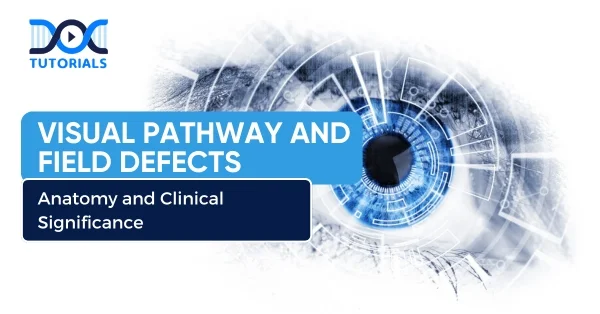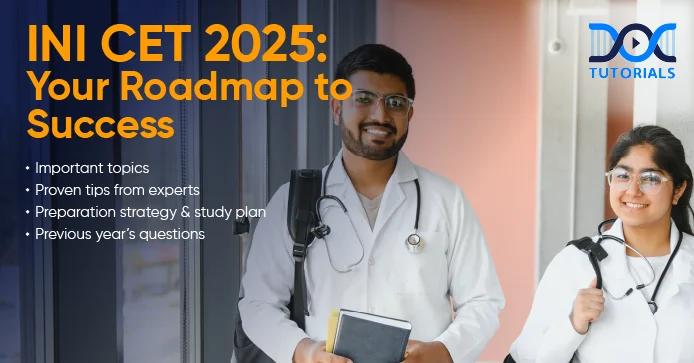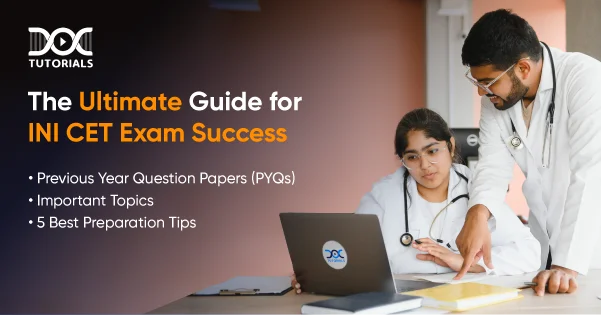Visual Pathway and Field Defects: Anatomy and Clinical Significance

The visual pathway is one of the most complicated and important networks in the human brain for medical purposes. This complex network transfers visual information from the eyes to the brain, which helps us understand what we see.
These defects can help doctors figure out the best way to treat a patient and how well they will do. For example, they can help doctors figure out whether a patient has homonymous hemianopia or a different pattern of hemianopia.
NEET PG students who wish to do well in neurology, ophthalmology, and emergency medicine need to learn everything there is to know about the anatomy, physiology, and clinical effects of the visual pathway and any problems with the visual field that go along with it.
Read on to find out more!
What is the Visual Pathway?
The visual pathway is the route that visual information takes from the eye to the brain’s visual cortex, where it is turned into something we can understand. These interlocking shapes work together to make the picture we perceive, much like a circuit does.
It all starts with the photoreceptors of the retina in our eyes. We can only comprehend how visual field defects happen and what causes them if we know the visual pathway and how it relates to a specific anatomical condition in the brain.
What is the Anatomy and Function of the Visual Pathway?
There are several important anatomical structures that make up the visual pathway, and each one is very important for how we process visual information.
The parts of the retina include:
- Photoreceptors: These are the rod and cone cells that pick up light and turn it into electrical signals.
- Bipolar Cells: The first-order neurones that send impulses from the photoreceptors.
- Ganglion Cells: They are second-order neurones whose axons join together to make the optic nerve.
- Retinal Processing: This is where the first step in processing visual information happens in the layers of the retina.
The central visual parts include:
- Optic Nerve: It sends visual information from the eye directly to the brain.
- Optic Chiasm: An important place where the nasal retinal fibres pass across to the other side.
- Optic Tract: This is where the fibres that cross and don’t cross meet on their way to the lateral geniculate nucleus.
- Lateral Geniculate Nucleus: It is a relay station in the thalamus that processes visual information.
The processing in the cortex includes:
- Optic Radiations: These white matter tracts send information to the visual cortex.
- Primary Visual Cortex: It is located in the occipital lobe and is where visual information is first processed in the cortex.
- Secondary Visual Areas: They are in charge of processing things like colour, motion, and shape recognition.
The visual field depicts everything you can see when you look straight ahead at a central point. The brain cleverly combines the visual fields of each eye to give us binocular vision, which improves our depth perception and expands our field of vision.
What are Field Defects and Their Clinical Significance?
Any damage to the visual pathway can cause problems with the visual field. These problems cause visual loss in patterns that are easy to predict and match the part of the brain that is afflicted. It is very important to understand these patterns in order to diagnose neurological problems.
There are many types of visual field defects, such as:
- Pre-Chiasmal Lesions: Damage that happens before the optic chiasm only affects one eye’s vision, leading to monocular visual field defects such as central scotomas or full monocular blindness.
- Chiasmal Lesions: Damage to the optic chiasm usually affects the crossing nasal fibres. This causes bitemporal hemianopia, which means that both temporal visual fields are destroyed while central vision stays normal.
- Post-Chiasmal Lesions: Damage that happens after the optic chiasm affects the same areas in both visual fields, making homonymous hemianopia patterns.
Homonymous hemianopia is a serious problem with the vision field that is clinically significant. It happens when the two parts of the visual fields are lost, usually because of injury to the optic tract, lateral geniculate nucleus, optic radiations, or visual cortex.
People with homonymous hemianopia will lose vision in one half of both visual fields, either the right or left half. For instance, a person with right homonymous hemianopia won’t be able to see anything on their right side, no matter which eye they use. This disease can make it very hard to do things like read, drive, and get around.
Doctors usually utilise a few diagnoses to check this condition:
- Confrontation Testing: This is a simple test done at the bedside to check for problems with the visual field.
- Perimetry: It is the process of carefully mapping out the edges and flaws in a person’s visual field.
- Goldmann Perimetry: This is an old technology that uses moving stimuli to check the condition.
- Automated Perimetry: This is a way to get accurate measurements using a computer.
To find the location of neurological lesions, measure the severity of brain injuries or diseases, and keep track of how pathological conditions are getting worse, it is important to understand visual field defects.
FAQs About Visual Pathway and Field Defects
- What causes visual field defects?
Strokes, brain tumours, head injuries, and diseases that impair the visual pathways are all common causes of visual field abnormalities.
- How are disorders of the visual pathways diagnosed?
The method normally includes a neurological exam, thorough visual field testing (perimetry), and brain imaging, like an MRI (magnetic resonance imaging) or CT (computed tomography) scan.
- Is it possible to treat homonymous hemianopia?
There is no full cure. But some people get better with rehabilitation therapy and training methods that are flexible.
- Are visual field defects painful?
No, the field faults don’t hurt. But the underlying cause of the headaches or other symptoms could be the same thing that makes them happen.
- Is homonymous hemianopia a permanent condition?
Yes. Homonymous hemianopia is usually permanent, but some patients do get better over the course of months to years.
Conclusion
The visual pathway is an important brain network that changes light into useful visual perception. To be able to spot and understand visual field flaws that could be signs of serious neurological problems, you need to know how this system works and what its parts are.
To give complete neurological care and increase diagnostic accuracy, NEET PG students and medical professionals must learn everything about the anatomy, physiology, and clinical importance of the visual pathway and any problems with the visual field that go along with it.
DocTutorials provides students with detailed study resources for NEET PG in several important fields, such as neurology, ophthalmology, medicine, and more. Our well-organised curriculum and competent coaching can help students become successful doctors and thoroughly understand complicated neurological ideas.
Join DocTutorials today and explore our NEET PG course to excel in your medical career!
Latest Blogs
-

NEET PG Exam 2025- Date, Pattern, Marking Scheme, Subject Wise Weightage, and Exam Mode
NEET PG Exam 2025 is the ultimate gateway for medical graduates aspiring to pursue postgraduate courses in medicine, including MD,…
-

INI CET Exam 2025: Your Roadmap to Success – Key Topics, Strategies, and Lessons from Last Year’s Papers
The INI CET exam is more than just a test; it’s a significant milestone for many medical students aiming to…
-

INI CET Exam Success: Previous Year Question Papers & Ultimate Guide – INI CET PYQ
One can feel overwhelmed while preparing for the INI CET (Institute of National Importance Combined Entrance Test). A vast syllabus,…




